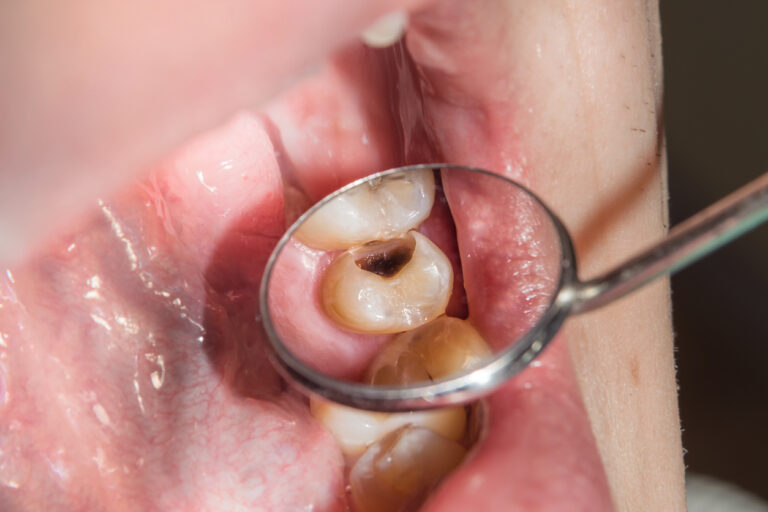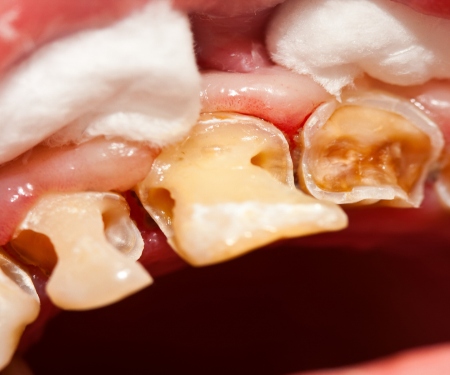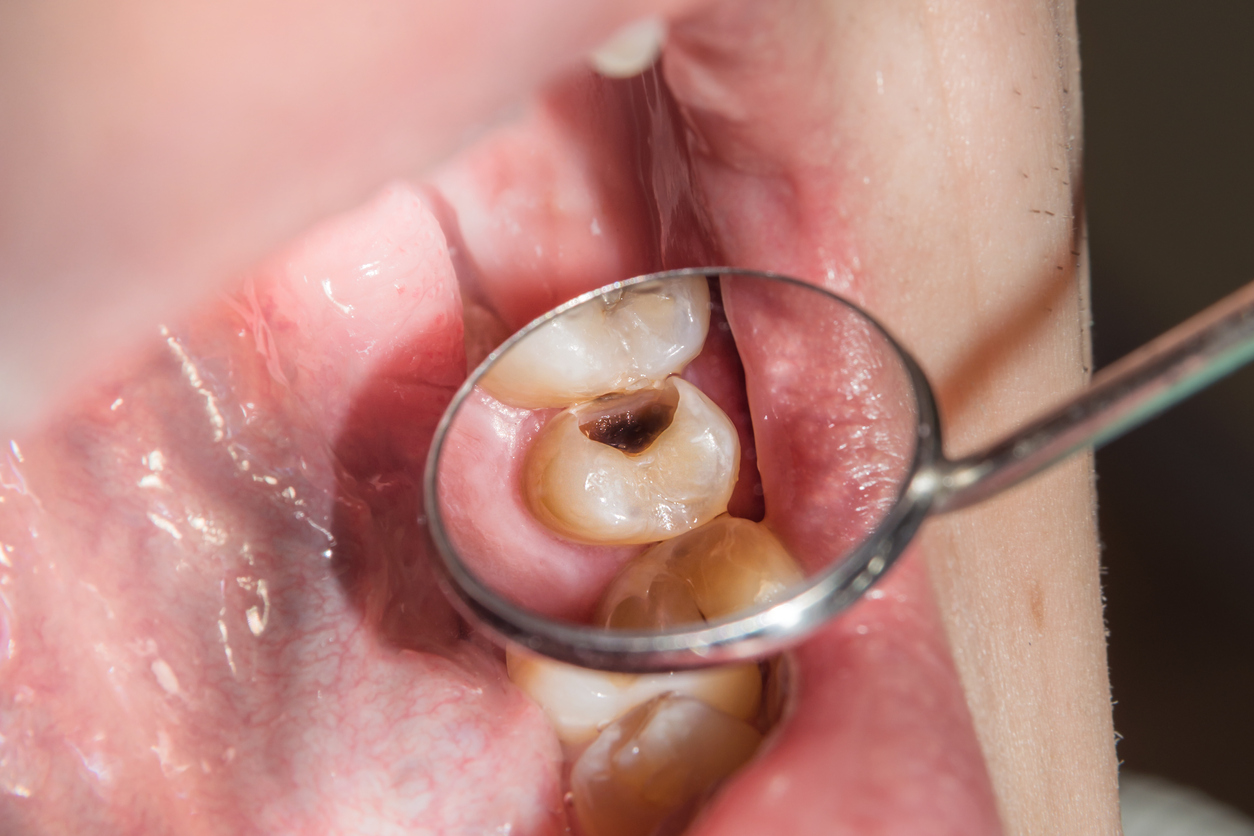It’s estimated that approximately 91% of Americans over 20 years of age have had cavities at some point. In addition to this staggering statistic, nearly 30% of Americans over 20 have untreated cavities. These numbers are incredible given the fact that with preventive care most cavities can be avoided. So how exactly does a cavity start?

Cavity spoiled tooth close-up was photographed through dental mirror
The outer layer of our teeth are covered in enamel. In case you didn’t know, this is the strongest substance in the human body. Enamel can however can be eroded by acid. When we eat sugary foods, the cavity-causing bacteria in our mouth feeds on the sugar as well.
Preventive Cavities
As a result they produce acid, which over time wears away the enamel and creates the cavity. This is why removing as much plaque as possible at least 2x each day is imperative to preventing cavities.
There are many factors that increase the risk for developing cavities. Included below and in no particular order but are not limited to:
● A high-sugar diet
● Frequent snacking
● Poor home care
● Xerostomia (dry mouth)
● Low exposure to fluoride
● History of cavities
● GERD
● Lack of dental care
● Eating disorders
Demineralization
A cavity often on your tooth starts with a hyper-white and chalky or brown area, this is called demineralization. At this stage,with increased fluoride and good homecare and before a true cavity is formed, the enamel can be remineralized!
Once the cavity has progressed through the enamel and into the softer layer of tooth (Dentin) it cannot be reversed and will begin to progress more quickly. If the cavity is not filled, the decay will eventually reach the pulp chamber of the tooth. This is where the nerve and blood vessels of the tooth lie.
If the decay infects the nerve a root canal is required to save the tooth. After a root canal a crown is indicated to provide strength to the tooth and prevent it from fracturing.
Risk Factor
Chances are you’ve had a cavity or two filled in your life, but by identifying your risk factors with your dentist and hygienist we can formulate a plan to prevent future cavities.
Seeing your hygienist is always a good fresh start to removing the build-up to reduce the start of those cavities. If you happen to be cavity prone we do have Clinpro (fluoride toothpaste) available!

Stages of a cavity.
At any time if you start to see or feel any signs of a cavity please call us! The sooner we can treat a cavity the better the prognosis and we can then determine what steps can be taken to prevent new cavities from developing.
References
Dental Care: https://www.dentalcare.com/en-us/patient-education/patient-materials/what-causes-cavities
Mouth Healthy: https://www.mouthhealthy.org/en/dental-care-concerns/how-do-we-prevent-cavities
National Institute of Dental and Craniofacial Research: https://www.nidcr.nih.gov/health-info/tooth-decay/more-info/tooth-decay-process
American Dental Association: https://www.ada.org/en/press-room/news-releases/2015-archive/may/new-cdc-data-on-adult-cavities
Faster, better, and more comfortable care is available at Dental Care Of Sumner. We truly live up to our name with an office packed full of advanced technology and a team who is helping move dentistry into the 21st century.
